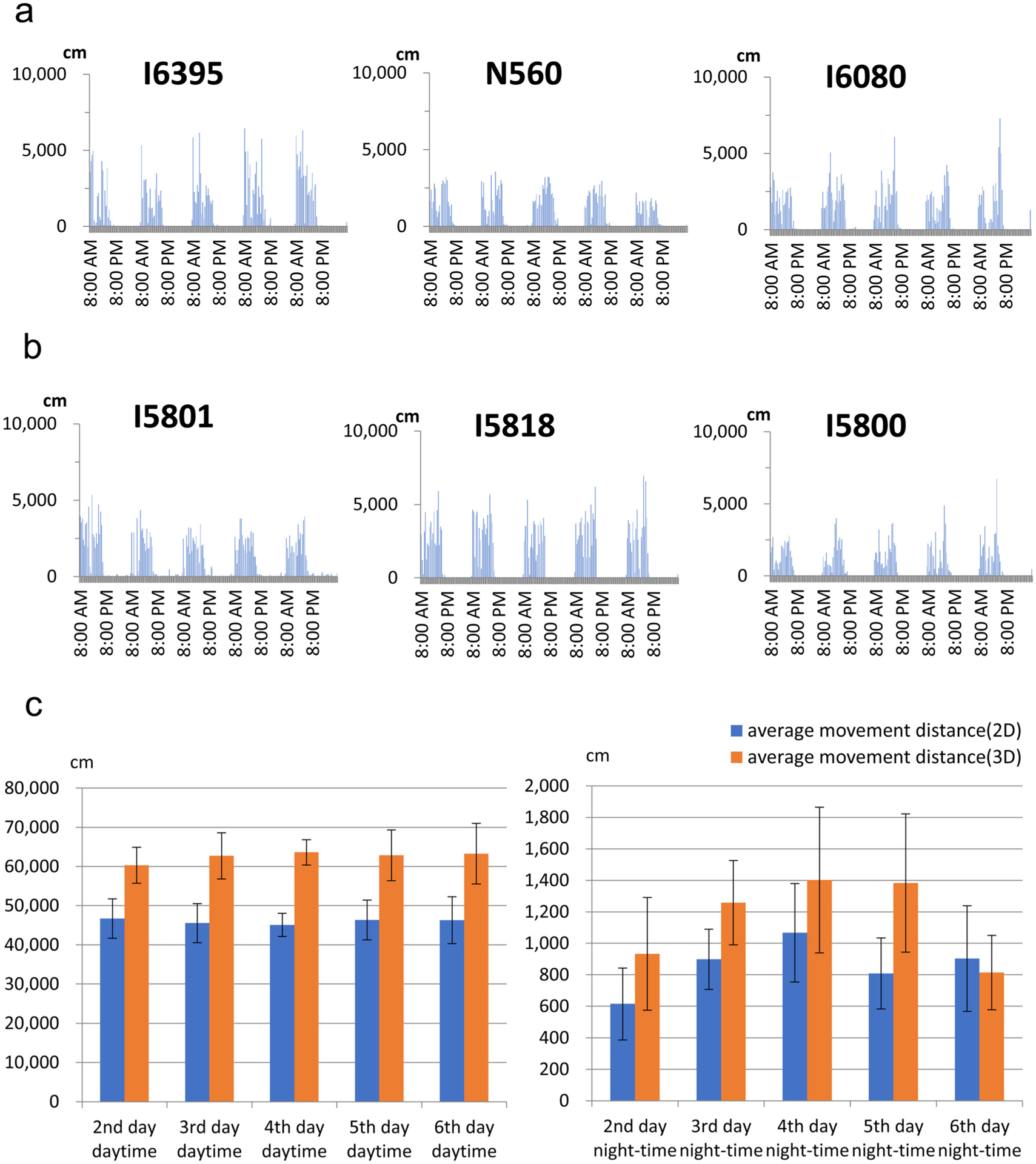Fig. 4.

MarmoDetector, 3D analysis, can detect marmoset movements more precisely than 2D analysis.
(a) The general patterns of movement for six marmosets were shown over 120-hour periods with 2D analysis. The movement distance of each direction was quantified every 30 min. The graph showed that all recorded marmosets were active during the daytime but not the night- time, reflecting the circadian activities of marmosets.
(b and c) MarmoDetector, 3D analysis could detect hidden activities recorded with 2D analysis. Average movement distance of 2D and 3D analysis during daytime (b) and night-time (c) were shown. In each period, total movement distance of 3D analysis was almost longer than that of 2D analysis. There was significant difference between 2D and 3D analysis during daytime (two-way ANOVA with repeated measures, F (1, 50) = 23. 784, p = 0.0000114). Values represent mean ± SEM.
